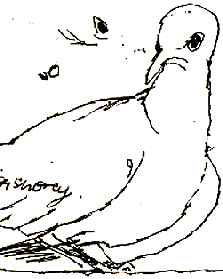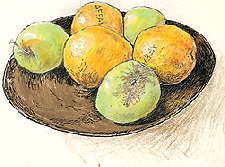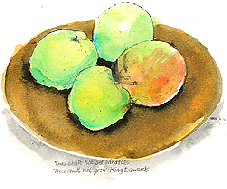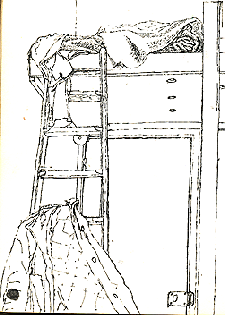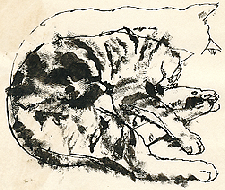Emily, one of my mum’s cats at the time. This drawing in springy pen line and inky
thumb prints shows the influence of Victor Ambrus.
These drawings are from the same student sketchbook from spring 1973 as the Box Hill
and Denby Grange drawings I’ve uploaded recently. This week I’m still working on
maps for my walks book so I haven’t had much time to draw for fun.
EARLIER THIS WEEK, I caught up with an old artist friend who’s been troubled by depression:
“Things are a lot better now; I only get that feeling that I wish that I was dead
about 2 or 3 times a week now.”
While drawing can transform your life in a positive way, because it gets you to look
outside yourself at the world around you, there is another side to it. Unless you’re
gregarious enough to enjoy regular sketchcrawls with a group of companions, as an
illustrator or painter you’re obliged to spend long periods alone.
“You get too much time to think!” says my artist friend’s partner.
A joiner once told me that when he worked on large contracts it was always the painters
(in this case I mean painter and decorators) who would be the first to complain and
launch industrial action.
“They always worked by themselves, so they had time to brood on things.”
But it’s not that drawing makes you liable to depression; I think it’s true that
people who like to work on their own - who favour a certain amount solitude - gravitate
to drawing.
A desire for solitude implies - at times, anyway - a desire not to be sociable, which
can be a sign of depression.
